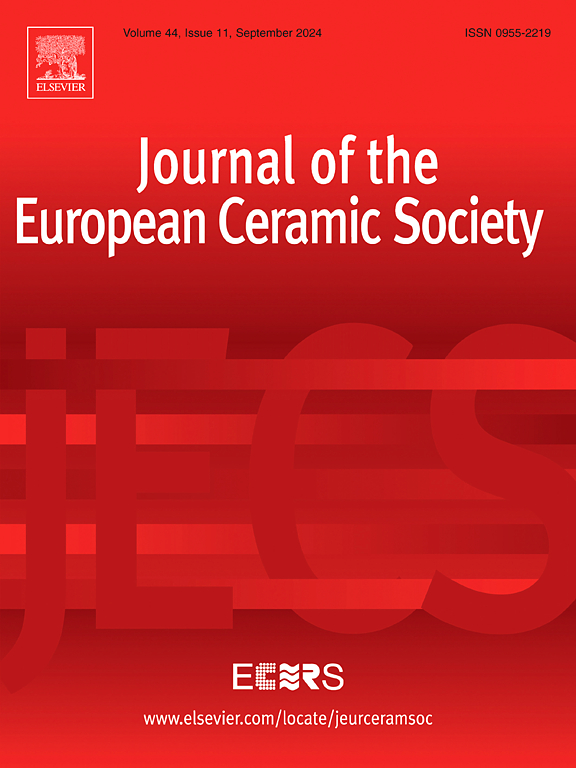Structural design and CMAS corrosion resistance of high entropy RE silicate multiphase ceramics as next-generation thermal/environmental barrier coatings
IF 5.8
2区 材料科学
Q1 MATERIALS SCIENCE, CERAMICS
Journal of The European Ceramic Society
Pub Date : 2025-01-13
DOI:10.1016/j.jeurceramsoc.2025.117207
引用次数: 0
Abstract
The advanced high entropy rare earth (RE) silicates achieving versatile property optimization as thermal/environmental barrier coatings (T/EBCs) is crucial to protect SiC-based ceramic composites as hot-section components in aero-engines. In this work, we simulated the structure of T/EBCs and designed high entropy (4RE0.25)2Si2O7/(4RE0.25)2SiO5 (RE= Yb, Y, Er and Sc) multiphase ceramics, as so to explore the relationship of structural regulation of multiphase ceramics with thermal properties and molten calcium–magnesium–aluminosilicate (CMAS) corrosion resistance. The results showed that the interaction of (4RE0.25)2Si2O7 and (4RE0.25)2SiO5 can not only influence the crystal structures such as the bond length and the lattice distortion, but also change the interface structure and produce the amorphous phase at the interface due to the interfacial stress, leading to reduction in thermal conductivity. Moreover, the coupling effect of different dissolution rates of (4RE0.25)2Si2O7 and (4RE0.25)2SiO5 can significantly improve high temperature CMAS corrosion resistance, and the corrosive depth was only about 150μm after CMAS corroding at 1500 °C for 48 h. This work also illustrates an efficient and reliable theoretical basis and guidelines in accelerating the design of next-generation T/EBCs.
求助全文
约1分钟内获得全文
求助全文
来源期刊

Journal of The European Ceramic Society
工程技术-材料科学:硅酸盐
CiteScore
10.70
自引率
12.30%
发文量
863
审稿时长
35 days
期刊介绍:
The Journal of the European Ceramic Society publishes the results of original research and reviews relating to ceramic materials. Papers of either an experimental or theoretical character will be welcomed on a fully international basis. The emphasis is on novel generic science concerning the relationships between processing, microstructure and properties of polycrystalline ceramics consolidated at high temperature. Papers may relate to any of the conventional categories of ceramic: structural, functional, traditional or composite. The central objective is to sustain a high standard of research quality by means of appropriate reviewing procedures.
 求助内容:
求助内容: 应助结果提醒方式:
应助结果提醒方式:


